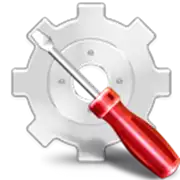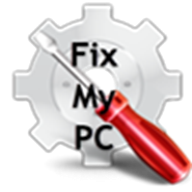In today’s fast-paced digital world, understanding desktop computers is essential for both personal and professional success.
Whether you’re a seasoned tech enthusiast or a newcomer navigating the vast landscape of technology, you likely have questions about desktop computers that need answering.
This article aims to address the top 10 frequently asked questions that encompass various aspects of desktop computing.
From choosing the right specifications and understanding the differences between various models to troubleshooting common issues and optimizing performance, we will provide you with valuable insights that cater to your needs.
You may wonder about the benefits of investing in a desktop over a laptop, the importance of upgrading components, or how to maintain your system for longevity.
By reading through these FAQs, you can gain a clearer understanding of desktop computers, empowering you to make informed decisions.
Whether you use your desktop for work, gaming, or creative endeavors, having a foundational knowledge will enhance your experience and help you maximize your machine’s capabilities.
Join us as we dive into the most pressing questions that users like you frequently ask, demystifying the world of desktop computing and providing clarity in an ever-evolving technological landscape.
Table of Contents Top 10 FAQs About Desktop Computers
What are the best desktop brands available today for your needs
When evaluating the best desktop brands for your needs, it’s essential to consider factors such as performance, reliability, and customer support.
Leading brands like Dell, HP, and Apple consistently deliver high-quality desktops tailored for various user requirements, whether for gaming, professional tasks, or everyday use.
Dell is known for its customizable options and robust build quality, making it a favorite for those looking to optimize their setup.
HP offers a range of desktops that balance performance and design, while Apple’s iMac is an excellent choice for users invested in the macOS ecosystem, providing seamless integration with other Apple devices.
In choosing a desktop computer, it’s crucial to match the specifications with your intended use.
For instance, if you play resource-intensive games, look for a model with a powerful graphics card and ample RAM.
If your needs are more basic, such as web browsing or office applications, a mid-range desktop would suffice.
Additionally, understanding when to upgrade your computer can also influence your decision, as opting for brands that allow easy upgrades can prolong the lifespan of your desktop and enhance its performance over time.
Ultimately, selecting the right brand and specifications will ensure you get the most value and functionality out of your investment.
Consider your usage when choosing a desktop computer for optimal performance
d suffice, allowing you to save on unnecessary costs.
Understanding the distinction between desktop and laptop options can also guide your decision.
Desktops generally offer better performance for the price, more upgrade flexibility, and superior cooling systems, making them ideal for heavy workloads or gaming.
Assessing your specific requirements, such as whether you need a machine for graphic design, video editing, or simple office tasks, will lead you to identify the optimal configuration that ensures your desktop is both efficient and cost-effective.
When contemplating an upgrade, it’s important to evaluate the performance of your current system against your usage demands.
If you’re frequently experiencing slowdowns or compatibility issues with the latest software, it may be time to consider an upgrade.
Familiarize yourself with current computer specifications, such as processor speed, RAM size, and storage capacity, to make an informed choice.
By aligning your desktop selection with your performance needs and future-proofing your investment, you can enhance your computing experience and ensure that your system remains capable of handling your workloads efficiently.
Compare desktop vs laptop for your specific requirements and preferences
preferences with the capabilities of each option, you can better determine the right fit for your lifestyle.
For instance, if portability is a priority for your work or study habits, a laptop may be more suitable, as it allows you to easily transport your machine between locations.
However, if you value performance and the flexibility to upgrade components like graphics cards or add more storage, a desktop might be the superior choice.
Additionally, consider the best desktop brands available, as reliability and support can significantly influence your experience.
Each brand offers various models that cater to different needs, from basic office tasks to high-end gaming setups.
By weighing your specific requirements against the strengths of desktops and laptops, you can make a more informed decision that aligns with your personal and professional demands, ensuring that you select a device that enhances your productivity and enjoyment.
Understand computer specifications explained to make informed purchasing decisions
When evaluating computer specifications, it’s essential to grasp the key components that will impact your purchasing decision.
Look closely at the processor (CPU), as it determines your system’s speed and performance capabilities; a more powerful CPU can significantly enhance multitasking and demanding applications.
Additionally, pay attention to RAM, which affects how much information your computer can handle simultaneously.
A higher RAM capacity allows for smoother operation and improved efficiency, particularly when running multiple programs or heavy software.
Storage type and capacity is another critical factor; choosing between traditional hard drives (HDD) and solid-state drives (SSD) can influence both speed and overall user experience.
SSDs, while often more expensive, provide faster data access and boot times, making them a preferred choice for many users.
Understanding these specifications will help you differentiate between models, guiding you toward a desktop that not only meets your current needs but also allows for future upgrades.
This knowledge will empower you to confidently navigate the market, whether you’re deciding when to upgrade your computer or weighing your options between desktop vs.
laptop models.
Check processor speed and RAM for better performance in your desktop computer
Optimizing your desktop computer’s performance hinges on assessing the processor speed and RAM capacity.
The processor speed, measured in gigahertz (GHz), directly influences how fast your system can execute tasks and process data.
A higher speed is particularly beneficial for resource-intensive applications such as gaming, video editing, or running virtual machines.
Conversely, insufficient RAM can bottleneck your system’s performance, causing slowdowns when multiple applications are open.
By ensuring your desktop has an adequate amount of RAM, you can achieve smoother performance and enhanced multitasking capabilities, which is crucial for both professional and personal use.
When considering whether to upgrade your system, understanding the balance between processor speed and RAM is vital.
The best desktop brands often provide detailed specifications that help you make informed decisions based on your specific needs.
For instance, if you find that your current setup struggles to keep pace with modern applications, upgrading the CPU or increasing the RAM can yield significant improvements.
This knowledge allows you to evaluate your options effectively, whether you are choosing a new desktop computer or contemplating an upgrade, ensuring that your investment meets your performance expectations.
Storage type affects speed; choose SSD for faster performance than traditional hard drives
The choice of storage type plays a critical role in the overall speed and performance of your desktop computer.
Solid State Drives (SSDs) offer significantly faster data access and load times compared to traditional hard drives (HDDs), which rely on mechanical parts to read and write data.
By opting for an SSD, you can experience quicker boot times, faster application launches, and improved system responsiveness, making it an ideal upgrade if you’re considering enhancing your computer’s performance.
This speed advantage is particularly noticeable during tasks that involve large file transfers or when running multiple applications simultaneously.
When evaluating your options among the best desktop brands, take note of the storage specifications they offer.
For those choosing a desktop computer, prioritizing an SSD can lead to a more seamless computing experience.
Additionally, if you’re comparing desktop vs.
laptop options, be mindful that many modern laptops also incorporate SSDs to enhance portability and performance.
As you contemplate when to upgrade your computer, replacing an HDD with an SSD can provide a substantial performance boost, making it a worthwhile investment for both productivity and leisure activities.
Upgrade your graphics card for enhanced gaming and multimedia experiences in your desktop
enhance their performance with dedicated graphics cards, but desktops generally provide more flexibility for upgrades.
When considering when to upgrade your computer, a graphics card upgrade can significantly transform your gaming and multimedia experiences.
With advancements in graphics technology, a new card can provide higher frame rates, improved resolution, and enhanced visual effects, immersing you deeper into your favorite games and media.
If you’re an avid gamer or frequently work with graphics-intensive applications, investing in a high-quality graphics card is essential.
As computer specifications continue to evolve, ensuring that your graphics card is up to date not only boosts performance but also future-proofs your system against increasingly demanding software.
Whether you’re streaming high-definition content, editing videos, or engaging in competitive gaming, a powerful graphics card can make a substantial difference in your overall experience.
When should I upgrade my computer? Monitor performance and functionality for best results
Regularly monitoring your computer’s performance and functionality is crucial in determining the right time for an upgrade.
If you notice significant slowdowns during routine tasks, extended loading times for applications, or an inability to run the latest software, these may be signs that your system is nearing its limits.
Additionally, if your current hardware struggles to support recent operating system updates or demands from new software, it’s an indication that an upgrade is necessary.
Keeping an eye on your computer’s specifications as they relate to your needs—whether that’s for gaming, professional use, or general tasks—will help you make informed decisions for optimizing your setup.
Upgrading components such as RAM, storage, or the CPU can vastly improve your experience with best desktop brands, enhancing speed and responsiveness.
It’s essential to align your upgrades with your usage requirements; for instance, if you primarily use your desktop for basic tasks, a processor upgrade may suffice, while more demanding users may need a comprehensive overhaul.
Understanding the balance between functionality and performance will ensure that your investment in your desktop remains relevant and effective, maximizing your productivity and enjoyment over time.
Evaluate your budget when selecting the best desktop brands for your needs
priorities, allocating a budget for a high-performance desktop may not be necessary.
However, if your work involves resource-intensive tasks like graphic design or gaming, investing in a reliable brand that offers superior specifications becomes crucial.
Consider the trade-offs between desktop vs laptop models as well; while laptops provide portability, desktops typically offer better power and upgradability, making them a more cost-effective solution for demanding applications.
When evaluating your budget, it’s important to think about the long-term value of the best desktop brands.
Look for options that not only meet your immediate needs but also allow for future upgrades.
Balancing cost with features such as processor speed, memory capacity, and graphic capabilities is vital in ensuring that your investment serves you well over time.
By taking the time to analyze how you plan to use your desktop, you can make informed decisions that enhance both performance and longevity without exceeding your financial limits.
Research user reviews for the best desktop computer options before making a purchase.
User reviews are an invaluable resource when selecting the right desktop computer for your needs.
They provide insights into real-world performance and reliability, offering a glimpse of how various models from the best desktop brands perform under everyday conditions.
By reading the experiences of other users, you can identify potential issues and advantages that specifications alone may not reveal.
This information can significantly impact your decision, especially when comparing options that may seem similar on paper.
Moreover, considering user feedback can help clarify when it’s the right time to upgrade your computer.
If you’re frequently encountering complaints about performance lags or hardware limitations in certain models, it might indicate that those options won’t meet your long-term requirements.
On the other hand, positive reviews that highlight strong specifications and user satisfaction could steer you toward a worthwhile investment.
Ultimately, thorough research into user experiences ensures you choose a desktop that aligns with your expectations and usage patterns, setting you up for success in your computing endeavors.
In conclusion, understanding the top 10 frequently asked questions about desktop computers can significantly enhance your experience as a user.
Whether you are considering a new purchase, looking to upgrade an existing system, or simply seeking to troubleshoot common issues, having the right information at your fingertips empowers you to make informed decisions.
By familiarizing yourself with key specifications, maintenance tips, and compatibility concerns, you can optimize your desktop setup to suit your specific needs.
As technology continues to evolve, staying informed will ensure that you harness the full potential of your desktop computer for years to come.
FAQ
Affordable desktop options
When looking for affordable desktop options, consider brands like Dell, HP, and Lenovo for budget-friendly models.
Explore refurbished or certified pre-owned systems for savings without sacrificing quality.
You might also look into mini PCs, which offer compact designs at lower prices.
Don’t forget to check local listings or online marketplaces for deals.
Prioritize your needs—if gaming or heavy multitasking isn’t essential, a basic model with decent specs will suffice.
Lastly, consider building your own desktop for greater customization within your budget.
What are the key components of a desktop computer, and how do they affect performance?
A desktop computer’s key components include the CPU, RAM, motherboard, storage, and GPU.
The CPU processes tasks, while RAM provides short-term memory for quick access to data.
The motherboard connects all parts, impacting communication speed.
Storage, whether HDD or SSD, affects data retrieval speed, with SSDs being faster.
The GPU enhances graphics performance, crucial for gaming and design.
Together, these components determine your computer’s overall performance—faster processing, smoother multitasking, and better graphics lead to a more efficient and enjoyable user experience.
Choose high-quality components for optimal performance tailored to your needs.
How do I choose the right operating system for my desktop computer?
To choose the right operating system for your desktop computer, first, consider your needs.
If you use specific software, ensure it’s compatible with the OS.
Evaluate user interface preferences; Windows is user-friendly, while macOS offers a sleek design.
If you prioritize customization and open-source options, think about Linux.
Assess your hardware; some OSs require more resources than others.
Lastly, consider your budget—some systems are free, while others come with a price.
Research each option, read reviews, and maybe even try them out before making your decision.
Choose the one that aligns best with your usage and comfort.
What are the advantages of building a custom desktop computer versus buying a pre-built one?
Building a custom desktop computer offers several advantages over buying a pre-built one.
You gain complete control over every component, ensuring optimal performance tailored to your needs.
This allows for better upgrades in the future and often results in cost savings.
You can choose high-quality parts, enhancing durability and reliability.
Additionally, assembling your own system provides a rewarding learning experience and greater satisfaction.
Customization also allows for superior cooling solutions and unique aesthetics, making your setup truly one-of-a-kind.
Overall, building your own desktop empowers you to create a machine that perfectly fits your requirements.
How can I troubleshoot common issues with my desktop computer, such as slow performance or connectivity problems?
To troubleshoot slow performance, start by checking for background programs consuming resources.
Run a virus scan and clear temporary files.
For connectivity issues, ensure your network cables are secure and reboot your router.
Check your network settings and update your drivers.
If problems persist, reset your network adapter or perform a system restore.
Regularly updating software and performing disk cleanup can also help maintain optimal performance.
Don’t forget to back up important data before making significant changes.
What maintenance tasks should I regularly perform to keep my desktop computer running smoothly?
To keep your desktop computer running smoothly, regularly perform these maintenance tasks:
- Update Software: Install operating system and application updates.
- Scan for Malware: Use antivirus software to detect and remove threats.
- Clean Hardware: Dust off components and clean the screen.
- Organize Files: Delete unnecessary files and organize folders.
- Defragment Hard Drive: For HDDs, defragment regularly to optimize performance.
- Check Disk Space: Ensure you have adequate free space for speed.
- Backup Data: Regularly back up important files to avoid loss.
These steps enhance performance and longevity.


